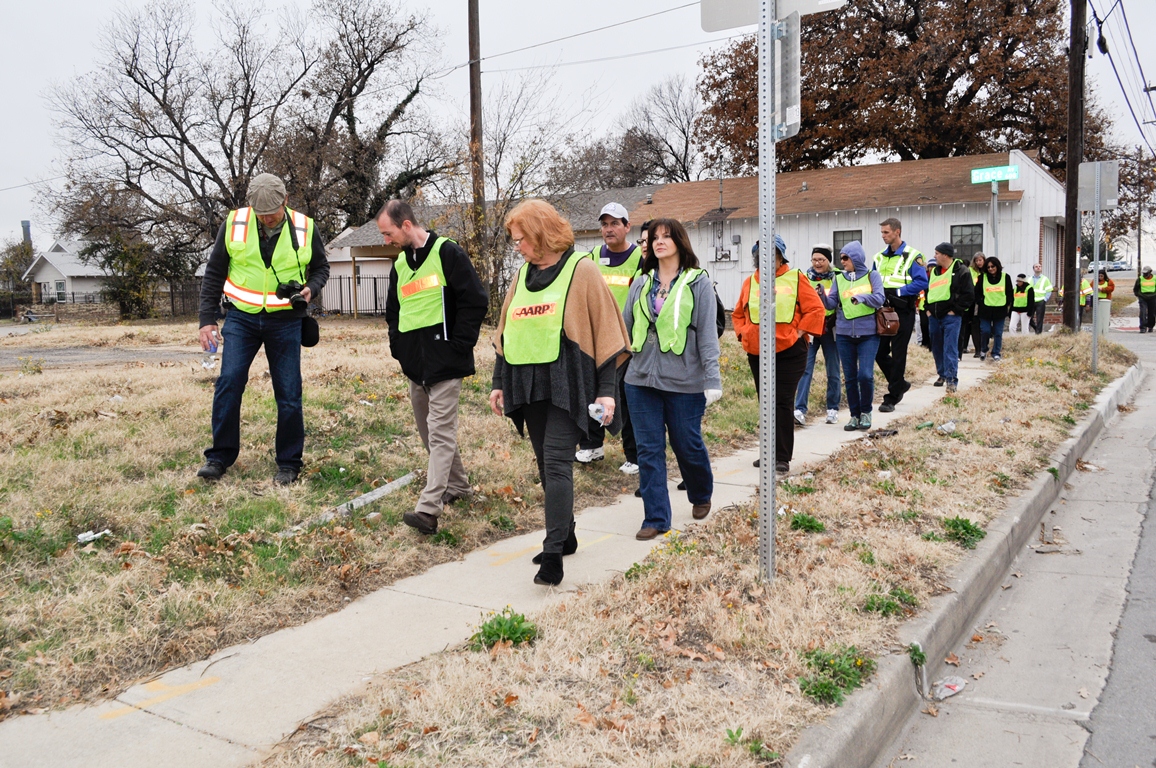AARP Hearing Center
Just northeast of downtown Fort Worth, in a neighborhood of artists, professionals and working class residents, a cadre of AARP volunteers are collaborating with community leaders and residents to transform Six Points Urban Village in the Riverside District into a vibrant, walkable place.
Named for its six-way intersection of three major streets, Six Points is one of 16 designated urban villages in Fort Worth. They’re small, dense – and sometimes long-neglected – pockets of the city that have been identified for a makeover to allow for more activity, mass transit and a mix of uses to encourage residents to live, work and play in the same area.
Carmel Perez Snyder, an associate state director for AARP Texas, said what’s taking shape in Six Points, also known as the “Riverside” area, is a transformation owed to a unique partnership between the City of Fort Worth, local business owners and residents, developers, and community organizers.

Starting in 2012, AARPs role in all this has been as a facilitator. “We found a neighborhood that was already working to create a more livable community, so we reached out to see if they could use another partner,” Snyder said. “We’ve been able to act as a convener.”
AARP has helped to bring experts and city officials to the area to identify ways to make the neighborhood more walkable and friendly to people of all ages, and encouraged the players to set short- and long-range goals for how to transform Six Points. “Work has been ongoing. We’re working, basically, to help connect the pieces,” Snyder said.
Today, some of the pieces include a significant investment from the City of Fort Worth. Last week, it was announced that the city’s staff picked Six Points to get $2.5 million in city funding from a 2014 bond program. The plan includes a $1.5 million federal grant for a portion of the redevelopment that goes to bid this fall, and is intended to connect the urban village with the city’s trail system.
Another crucial component of the transformation is private investment for the corridor that’s expected to come over the next five years. City officials project $40 million in private investment. A firm won approval last week from the City Council on a rezoning of property for a planned 18-acre project that’s to include about 400 housing units.
But change has already started here. While gang activity and crimes still dog the neighborhood, bike lanes and traffic-calming devices now exist in some places, and there are plans for more landscaping along roads.
In September 2014, Fort Worth joined what’s now 51 communities across the country in the Network of Age-Friendly Communities, spearheaded by AARP. The transformation of this North Texas neighborhood, says Snyder, isn’t altogether unlike what’s being achieved in cities throughout the nation that are seeking to be more age-friendly.
“It’s happening in communities around the country. It’s a movement,” she said. “People want to be able to walk their community. It’s healthier for individuals. It’s healthier for the community. And economically, it sparks growth.”
For more about the Livable Communities work in the Six Points area and other AARP work in Fort Worth, contact Carmel Perez Snyder at csnyder@aarp.org . Mark Hollis can be reached at mhollis@aarp.org.































































